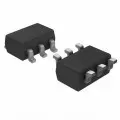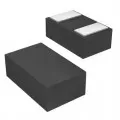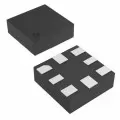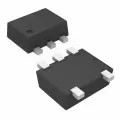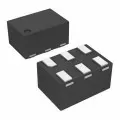OUTLINE:
A Comprehensive Guide to Testing TVS Diodes
 3291
3291In a world where electronic devices reign supreme, understanding the intricacies of TVS diode testing is essential for ensuring reliability and performance.
This guide isn't just another technical manual; it's your passport to mastering the art of TVS diode testing, empowering you with practical knowledge and hands-on techniques.
Whether you're a seasoned electronics enthusiast or a curious beginner, buckle up as we unravel the secrets of TVS diode testing and empower you to conquer electronic challenges with confidence.
Let's dive in and elevate your electronics game to new heights!
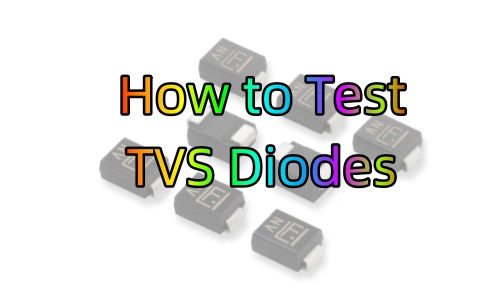
Something You Need to Know: What Is A TVS Diode
Diodes are the most basic semiconductor devices and are commonly used in many electronic designs such as rectifiers, converters, inverters, protection circuits, voltage regulators, etc. There is a special type of diode called TVS diode which plays a vital role in handling transient spikes in power electronics design circuits.
What does transient mean
A transient is a short-duration spike in voltage or current that can damage a circuit in a number of ways. Some transients occur only once, while others may be repetitive. These transients can range from a few millivolts to several kilovolts and last from nanoseconds to hundreds of milliseconds.
What causes transients in circuits
Transients can be caused by internal or external connections in a circuit. For example, a transient can be generated internally due to the switching of inductive loads or contact failures in switches and connectors. Externally, it can be generated by lightning strikes or inductive switching.
Transient Voltage Suppression Device (TVS)
A TVS (Transient Voltage Suppression) diode is a specialized semiconductor device designed to protect electronic circuits from voltage spikes and surges.
Also known as surge suppressors or transient suppressors, TVS diodes provide a pathway for excess voltage to be safely diverted away from sensitive components, thus preventing damage caused by transient voltage disturbances.
These diodes can respond rapidly to voltage spikes, effectively clamping the voltage to a safe level and safeguarding electronic devices from potential harm.
TVS diodes are commonly used in various applications where protection against transient voltage events is crucial, such as in power supplies, telecommunications equipment, automotive electronics, and industrial machinery.
How Does A TVS Diode Work
A TVS (Transient Voltage Suppression) diode provides protection against voltage spikes by rapidly responding to transient events.
During normal operation, it maintains a high impedance state. However, when a voltage spike occurs, exceeding its breakdown voltage, the diode transitions into a conducting state, offering a low-impedance path for excess voltage to be safely diverted away from sensitive components.
This rapid response dissipates excess energy, safeguarding the circuit from potential damage.
Once the transient event subsides, the TVS diode returns to its high-impedance state, ready to respond to future transients.
Overall, TVS diodes play a crucial role in ensuring the reliability and longevity of electronic devices in various applications.
TVS Diodes Types
Transient voltage suppressor diodes can be classified into two types.
One is unidirectional and the other is bidirectional.
Unidirectional TVS diodes act as rectifiers in the forward circuit like any other avalanche diode and this unidirectional diode can handle very high peak currents. The symbol of a unidirectional TVS diode is shown in the figure below and it is very much like a Zener diode.
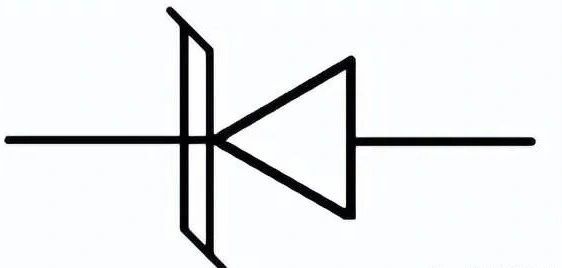
On the other hand, bidirectional TVS diodes can be represented by two avalanche diodes connected in series with each other, facing each other. These diodes are connected in parallel with the device or circuit to be protected. Unlike the symbol, these diodes are manufactured as a single component.

How Do you Test the Breakdown Voltage of A TVS Diode
Testing the breakdown voltage of a TVS (Transient Voltage Suppression) diode involves applying a gradually increasing voltage across the diode and monitoring the current flow.
Here's a basic procedure for testing the breakdown voltage:
Setup: Connect the TVS diode to a power supply and a current-limiting resistor in series. Ensure that the connections are correct and secure.
Voltage Ramp-Up: Gradually increase the voltage from the power supply while monitoring the voltage across the diode using a voltmeter. Start with a low voltage and slowly increase it until the breakdown voltage is reached.
Current Monitoring: As the voltage approaches the breakdown voltage, monitor the current flowing through the diode using an ammeter. The breakdown voltage is typically reached when there is a sudden increase in current flow.
Note the Breakdown Voltage: Record the voltage at which the sudden increase in current occurs. This voltage is the breakdown voltage of the TVS diode.
Repeat if Necessary: If needed, repeat the test multiple times to ensure consistency and accuracy of the results.
How to Test TVS Diodes with Multimeter
Testing TVS diodes with a multimeter is simple and requires just a few steps:
Set the Multimeter: Turn your multimeter to the diode test mode. This mode is usually denoted by a diode symbol.
Identify Anode and Cathode: Determine the anode (positive) and cathode (negative) terminals of the TVS diode. Refer to the diode's datasheet or markings for guidance.
Test Continuity: Place the multimeter probes on the anode and cathode terminals of the TVS diode. If the diode is good, the multimeter will beep or display a low resistance reading, indicating continuity.
Check Forward Voltage: Keep the multimeter probes in the same positions and observe the voltage reading on the multimeter. A forward voltage drop of approximately 0.7 volts (for silicon diodes) indicates proper functioning.
Reverse the Probes: Swap the positions of the multimeter probes (anode to cathode and vice versa). Again, check for continuity and observe the voltage reading. A high resistance reading or no continuity indicates proper reverse bias behavior.
The Signs of A Bad TVS Diode
Identifying signs of a bad TVS (Transient Voltage Suppression) diode is crucial for maintaining the reliability and safety of electronic circuits.
Here are common indicators that a TVS diode may be faulty:
Short Circuit: A short-circuited TVS diode will allow current to flow in both forward and reverse directions, essentially bypassing its protective function. This can lead to excessive current flow through the circuit and potential damage to components.
Open Circuit: If a TVS diode fails to conduct in both forward and reverse directions, it may be open-circuited. In this state, the diode cannot provide protection against transient voltage spikes, leaving the circuit vulnerable to damage.
Visible Damage: Physical damage such as cracks, burns, or discoloration on the TVS diode can indicate internal damage or overheating. This may result from excessive voltage or current passing through the diode during a transient event.
High Leakage Current: An increase in leakage current through the TVS diode, particularly in its off-state, can suggest degradation or failure. This may occur gradually over time due to aging or exposure to prolonged overvoltage conditions.
Inconsistent Performance: If the TVS diode exhibits inconsistent or erratic behavior during testing, such as unexpected changes in voltage drop or resistance, it may indicate internal faults or degradation.
Circuit Failure: If electronic components downstream of the TVS diode are experiencing frequent failures or malfunctions, it could be a sign that the diode is no longer providing adequate protection against transient voltage events.
Excessive Heat: A TVS diode that becomes excessively hot during operation, especially when subjected to transient voltage spikes, may be failing. Overheating can accelerate degradation and lead to premature failure of the diode.
Final Verdict
"Test TVS Diodes: A Guide for You" serves as an invaluable resource for engineers, technicians, and electronics enthusiasts alike.
By providing clear and concise instructions for testing TVS diodes, this guide empowers individuals to ensure the reliability and performance of electronic circuits.
From identifying signs of a bad TVS diode to performing simple yet effective testing procedures with a multimeter, this guide equips readers with the knowledge and skills needed to safeguard electronic systems against transient voltage spikes.
By following the guidelines outlined in this comprehensive guide, users can confidently assess the health of TVS diodes and take proactive measures to maintain the integrity of electronic devices.
Ultimately, "Test TVS Diodes: A Guide for You" is an indispensable tool for anyone seeking to enhance the reliability and longevity of electronic systems through effective testing practices.

Disclaimer: The views and opinions expressed by individual authors or forum participants on this website do not represent the views and opinions of Chipsmall, nor do they represent Chipsmall's official policy.

share this blog to:



